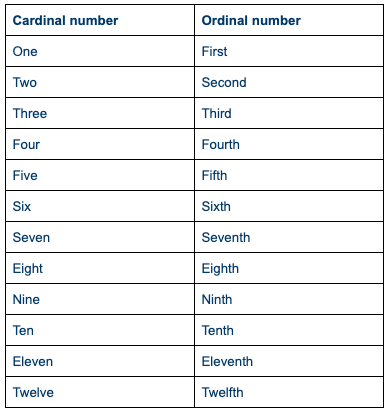How to read and write dates in English
Nov 18, 2019
An important part of studying English is to learn how to say, write and understand dates. So let’s look at the different things you need to know to help you get ready to use dates in English!
How to ask which day of the week
If you want to ask what day of the week it is, say:
What day is it today? or What’s the day today?
What day is it tomorrow? or What’s the day tomorrow?
To answer these questions you can say,
It’s Monday today. or Today is Monday.
It’s Tuesday tomorrow. or Tomorrow is Tuesday.
How to ask the date
If you want to ask what the date is, you can say:
What’s the date today? or What’s today’s date?
What’s the date tomorrow? or What’s tomorrow’s date?
You can answer by saying:
It’s 27th September. / Today is 27th September.
Tomorrow is September 28th.
How to say the date
When we say dates in English we use ordinal numbers. So for 1 January, we don’t say the cardinal number ‘one’ but we say ‘first’. And we say ‘the’ before the number followed by ‘of’. For example,
It’s the first of January.
It’s also possible to invert the month and day. For example,
It’s January first.
In this case you don’t need to say ‘the’ and ‘of’.
Ordinal numbers
Here are the ordinal numbers that you need to use:

From 13 to 19 we continue to add -th to create the ordinal numbers (thirteenth, fourteenth, etc.)
While from 21 to 31 the ordinal numbers end according to the ending of the second number. For example,
21 – twenty-first
22 – twenty-second
23 – twenty-third
24 – twenty-fourth
How to write the date
When we write a date we don’t need to add ‘the’ and ‘of’ as we do when we speak. For example:
It’s the first of January – speaking
It’s 1st January – writing
As you can see, you don’t need to write the number but we usually add the last two letters of the ordinal number. For example:
First – 1st
Second – 2nd
Third – 3rd
Fourth – 4th
How to say the year
There are two ways to say the year in English. Until the year 2000, every year was pronounced as two numbers. For example,
1485 – fourteen eighty-five
1750 – seventeen fifty
1900 – nineteen hundred
For the first years of previous centuries, we add ‘0’. For example:
1801 – eighteen o one
While for the first ten years of the 21st century, we use the word ‘thousand’. For example:
2000 – two thousand
2006 – two thousand six
From the year 2010 onwards you can say two numbers again. For example,
2012 – twenty twelve
However, some people continue to use ‘thousand’ and say:
2012 – two thousand twelve
Centuries
When we refer to a century in English, we use ordinal numbers. For example,
1800-1900 = the nineteenth century
1900-2000 = the twentieth century
And centuries are divided into ten decades. A decade is a period of ten years.
Historical dates
When you talk about a year in the distant past, you can use B.C. and A.D. The letters B.C. mean ‘before Christ’. For example,
The first Olympic Games were in 776 B.C.
A.D. means ‘Anno Domini’ – the year of the Lord, marking the birth of Christ. So this year is 2019 A.D. However, it’s only necessary to add A.D. when it is unclear which time period you’re referring to. For example,
Romulus Augustulus was the last Roman Emperor from 475-476 A.D.
American vs British English difference
There is a difference in the order of indicating the date and the month between American and British English. In American English it’s common to put the month first followed by the date. For example,
09.25.2019 – September 25, 2019
While in British English the same date is,
25.09.2019 – 25th September, 2019
So be careful when you write a date as numbers as above. Depending who you’re writing to, you may need to write the month to be clear.
When you make an arrangement in English – such as a meeting at work or a hotel reservation – getting the date right is really important.